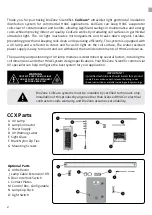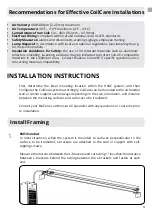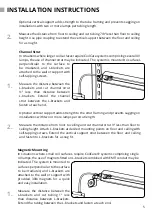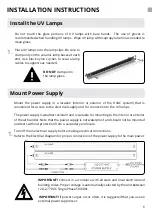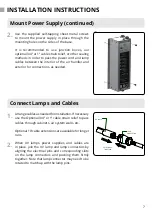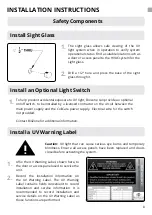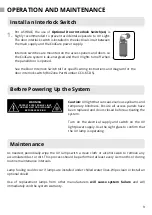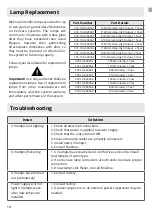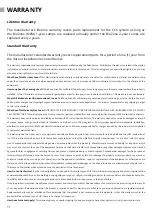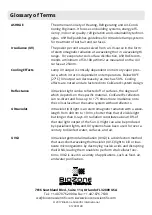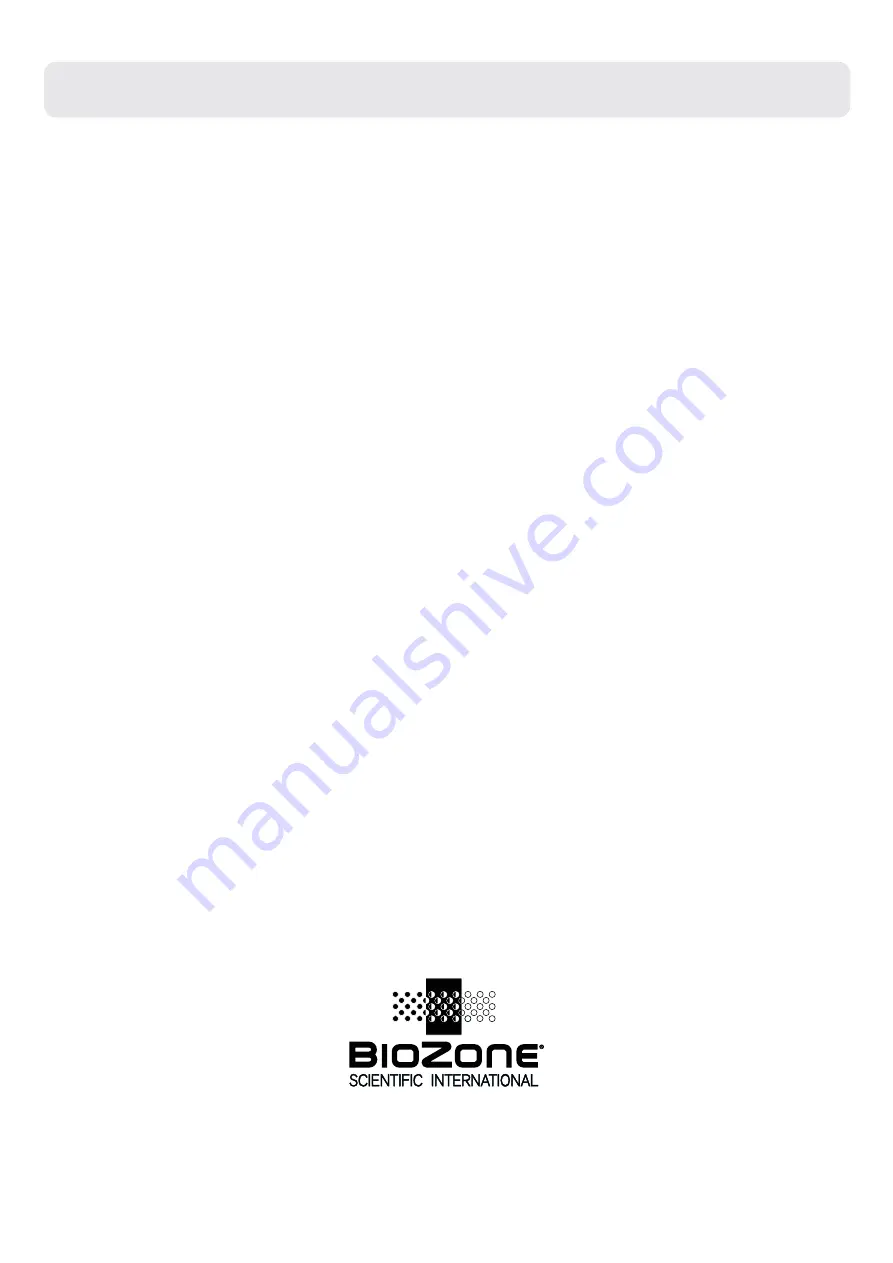
7616 Southland Blvd., Suite 114, Orlando FL 32809 USA
Tel.: +1.407.876.2000
●
Fax: +1.407.876.7630
●
www.biozonescientific.com
© 2017 BioZone Scientific International
81200012B
Glossary of Terms
ASHRAE
The American Society of Heating, Refrigerating and Air-Condi-
tioning Engineers. It focuses on building systems, energy effi-
ciency, indoor air quality, refrigeration and sustainability technol-
ogies. ASHRAE publishes guidelines for Ultraviolet lamp systems
for treatment of both air and surfaces.
Irradiance (UV)
The power per unit area received from a UV source in the form
of electromagnetic radiation at a wavelength or in a wavelength
range. For evaporator coil surface disinfection, ASHRAE recom-
mends a minimum of 50-100 μW/cm2 as measured on the coil
surface at 254nm.
Cooling Effects
Lamp UV output is critically dependent on mercury vapor pres-
sure, which in turn is dependent on temperature. Below 80°F
[27°C] UV output can decrease by as much as 50%. Cooling
effects are noted and are factored into CoilCare® system design.
Reflectance
Ultraviolet light can be reflected off of surfaces, the degree of
which depends on the specific material. CoilCare®’s reflectors
can re-direct and focus up to 1.75 times more irradiance onto
the coil surface than the same system without reflectors.
Ultraviolet
Ultraviolet (UV) light is an electromagnetic radiation with a wave-
length from 400 nm to 10 nm, shorter than that of visible light
but longer than X-rays. UV radiation constitutes about 10% of
the total light output of the Sun. UV light can also be produced
by specialized lights, and UV systems have been used for over a
century to disinfect water, surfaces, and air.
UVGI
Ultraviolet germicidal irradiation (UVGI) is a disinfection method
that uses short-wavelength ultraviolet (UV-C) light to kill or inac-
tivate microorganisms by destroying nucleic acids and disrupting
their DNA, leaving them unable to perform vital cellular func-
tions. UVGI is used in a variety of applications, such as food, air,
and water purification.


